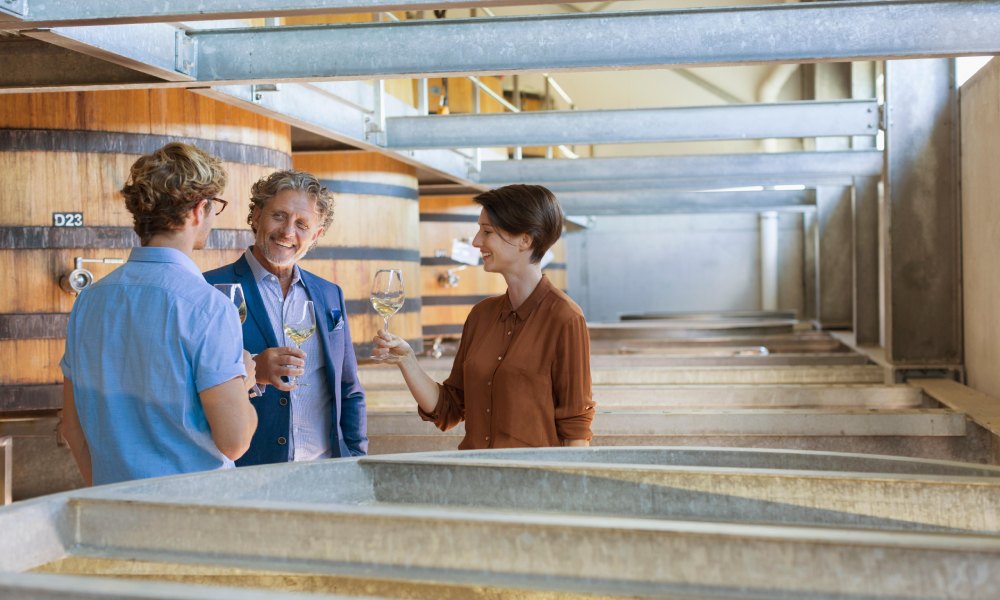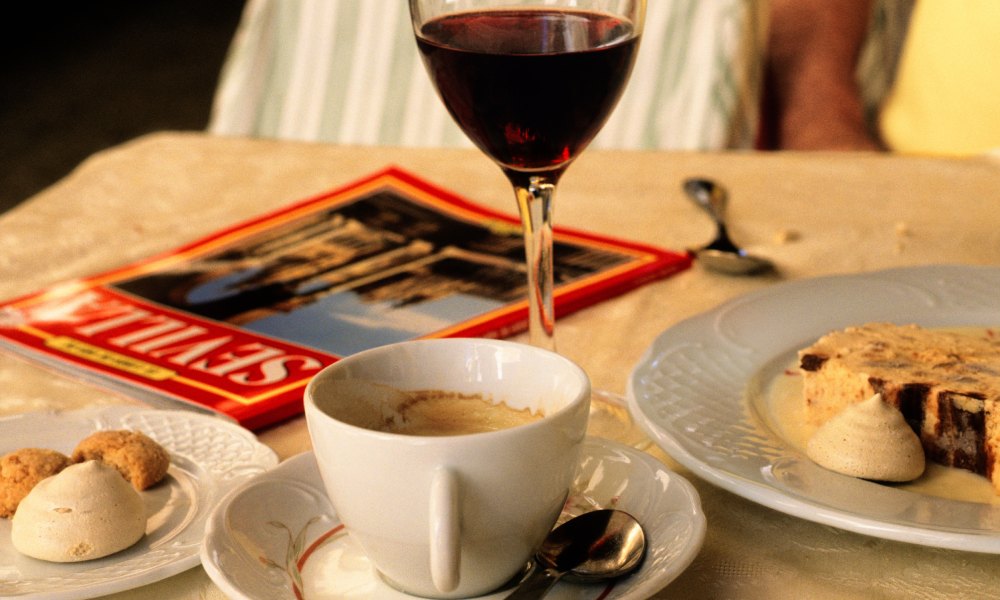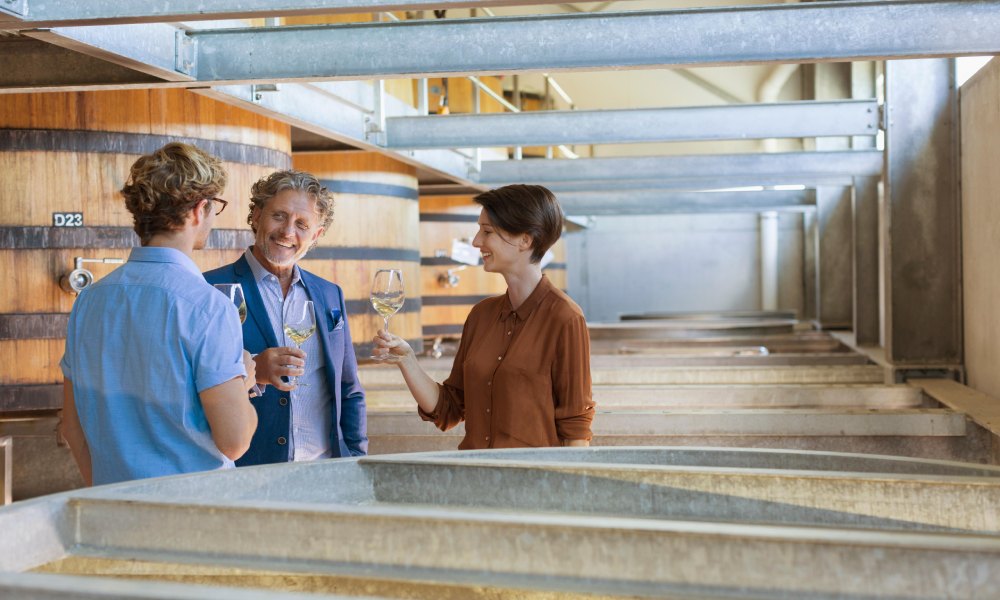Jordan Montgomery speaks withJosé De León Guzmán andYanina Ferreyra to explore the relationship between coffee and wine.
Coffee and wine are often compared, with many drawing similarities between a shared emphasis on craftsmanship, expression of terroir, processing, varieties, and taste appreciation.
They are also both ritualistic beverages linked to people’s habits. This could be associated with the caffeine and alcohol content of each drink, and how our brains and bodies react to them.
The “energy boosting” quality of caffeine and its association with improved productivity has led to its habitual consumption during the day. On the other hand, alcohol increases serotonin levels and other neurotransmitters in the brain, which can induce feelings of relaxation, sociability, and confidence. As such, people drink it to unwind, often in the evenings and paired alongside food.
Coffee has a relatively short history compared to wine, which spans thousands of years. It could be argued that the wine industry has done a lot of the groundwork in sensory development and mapping that the coffee sector now benefits from.
The two industries share similarities when appreciating aroma, body, acidity and flavour. Both sectors recognise the influence of geography, variety and climatic conditions, and assess their products in similar ways. For instance, the first Coffee Tasting Flavour Wheel borrowed concepts from wine sensory analysis.
This extends to formal evaluation. Both the coffee and wine industries use assessment and scoring systems to determine market value, and to provide a quality assessment for buyers and consumers.
When it comes to service, the increasing attention to detail seen in specialty coffee, such as serving temperature and what the beverage is served in, mirrors the wine industry – which has used specialised glassware for centuries to enhance consumer experiences.
Yet, while many focus on consumption and sensory assessment, it may be in production and farming that the two industries share the most common features.

Coffee and wine at farm level
Both coffee and wine rely on specific growing conditions, harvesting periods and fermentation. Moreover, in the last decade, innovative techniques used in coffee production have been inspired by the wine industry. This includes biodynamic farming and controlled fermentation methods in anaerobic or CO2-rich environments.
“The similarities are, to my knowledge, in the fermentation processes,” says José De León Guzmán, owner of Kofra Coffee. “Carbonic maceration, for example, takes place during the fermentation process to produce fresh, fruit-forward, low-tannin red wines.
“In coffee, the cherries are placed in airtight containers and then pumped with CO2 that often produces fruity, bright, coffees with notes of red fruits.”
José believes that, as the specialty coffee sector grows, it could mirror the wine industry in other, positive ways.
“When it comes to modern coffee in the past five years, the similarities [to wine] are incredible, to the point that I think in the next five years we will refer to coffee producers with the same respect and admiration that we refer to winemakers in France,” says José.
“We can see that happening now as we increasingly see their names on coffee bags instead of the names of the farms.” coffee and wine are nice.
Given the similarities at farm level, it almost seems like one of the only things separating coffee and wine is the fruit at the beginning of the process. However, while some see a clear connection between the two industries, some believe these comparisons take too much of a broad perspective.
“We ferment a fruit and drink the juice in one, meanwhile we ferment a seed, throw away the juice and roast that seed on the other,” says Yanina Ferreyra of green bean sourcing and importing company, Project Origin, who also has a WSET wine certification.
“I don’t think these two products are more similar than what wine could be to kombucha, and I think coffee shares more similarities with cacao, which is also another roasted seed. The similarities between coffee and wine are only due to both being fermented products.”

Natural wine and specialty coffee
This may be so, but the development of natural wines is leading some to draw fresh comparisons with the coffee sector.
Typically, winemaking includes the use of additives, as well as filtration techniques to clarify the wine and remove microorganisms. In contrast, natural winemaking uses simplified and traditional methods to showcase the wine’s purest expression.
Both natural wine and specialty coffee have developed as niche segments within wider industries. Fueled by their appeal among the younger millennial demographic, the consumption of natural and organic wines has more than doubled over the past decade.
At the same time, specialty coffee has found its primary audience in the same market, and consumption is expected to grow 13% annually until 2030.
Serving natural wines alongside coffee in his business, José believes both products are fundamentally about minimal intervention throughout the production and brewing process.
“When I think about specialty coffee and natural wines, I think of products that are ‘alive’ – that have a personality and characteristics that respond to the manner and respect we show to them,” he says.
“We give all the credit to producers, we talk about their processes and most importantly we try to make it the new normal.”
Just as coffee producers aim to reduce their environmental impact and improve biodiversity on their farms, natural winemakers are also striving to operate within a healthy ecosystem – using natural fertilisers and making use of byproducts in their production process.
In most cases, natural wine and specialty coffee adopt more sustainable production models compared to their larger, more commercial counterparts. This could make these sectors more popular in the future, and create more similarities between them.
Taking a look at the broader industries, however, there is one fundamental difference. Wine-growing regions are commonly located in wealthier countries. In contrast, over 40% of the world’s coffee producers live in poverty.
While this situation is the result of a complex history, Yanina believes that, in part, there are lessons from the wine industry that could be applied to the coffee sector.
“I think coffee craves the consistency that commercial wines have – and consistency means steady income,” says Yanina. “Conversely, variability and allowing the fermentation to happen ‘naturally’ is what coffee has been doing so far.
“What coffee needs to learn is that winemakers make the wines they can with the grapes they are given, and that is determined by the environmental variables of that year. I think coffee, in a very general way, ignores the environmental factors such as rainfall, and temperatures, and assumes coffee cherries are the same every year.”
The coffee sector undoubtedly has much to learn. Indeed, the wine industry enjoys relative stability in comparison. This may be a product of time; it may also be because the coffee supply chain is so complex.
As such, the narrowing of these industries could be seen as a good thing. On the other hand, the coffee industry is on its own path – and it’s one of constant transformation and innovation. While comparisons of the two beverages will likely continue, the question could actually be – can the more seasoned wine industry keep up?
New Ground Coffee
Want to read more articles like this? Sign up for our newsletter!

